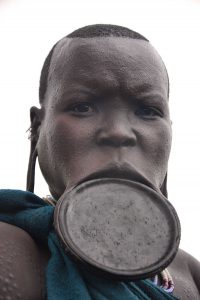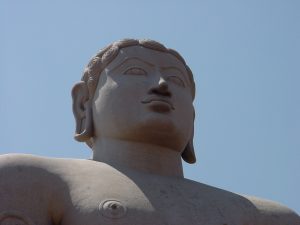Stretching In Body Piercing
Stretching, in the context of body piercing, means to deliberately expand a healed piercing so that you can wear a specific kind of jewellery. As we mentioned in one of our previous posts on the history of piercings and body modifications, even the ancient Egyptians were fans of stretching their pierced earlobes. The evidence can even be found on the impressive death mask of the young Pharaoh Tutankhamun, whose grave and all its treasures was discovered in 1922 and excavated by Howard Carter.
 Lip plates
Lip plates
The form most commonly seen in the West is the stretched earlobe. However, many have also seen photos of women from certain tribes in Kenya that wear mindbogglingly large lip plates as ornaments, having had their lower lips stretched from a young age. The tradition was previously widely practiced throughout cultures in the Americas, as well as across all of eastern Africa.
It is done by making a small pierced hole into the lower lip and then place a clay or wood circle into it, gradually replacing it with larger and larger pieces. They are sometimes referred to as lip ‘plugs’ or ‘plates’. Among indigenous populations of South America, particularly in Brazil, it is men, not women, who wear the large plates in their bottom lips. The most significant ones are reportedly worn by war chiefs and great orators.
The lobes of Buddha and the Moai
But let’s get back to ear lobe stretching such as can be seen on statues of Buddha Shakyamuni. Before becoming one of the enlightened masters of the world, the Buddha was an aristocratic and wealthy prince. While stretched earlobes today may be mostly associated with subcultures, it was once a status symbol of the wealthy and royal classes in Asia.
 Before he went to live an ascetic life devoted to mastering the mind and benefiting others, the Buddha would have worn ornate jewelry in his ears. However, when he removed them as part of renouncing his sociocultural heritage, his earlobes remained permanently stretched, and he is thus depicted with ear lobes reaching almost to his shoulders – but without any bedazzlement.
Before he went to live an ascetic life devoted to mastering the mind and benefiting others, the Buddha would have worn ornate jewelry in his ears. However, when he removed them as part of renouncing his sociocultural heritage, his earlobes remained permanently stretched, and he is thus depicted with ear lobes reaching almost to his shoulders – but without any bedazzlement.
The stretched ear lobes can also be seen on the mysterious Moai, the monolithic figures dispersed across the Easter Island in Polynesia. The statues were created between 1250 and 1500 CE, so we know the practice was spread throughout many cultures for a very long time. Aztec and Mayan men are also known to have stretched their ears, with higher class males wearing plugs made of jade, and others stone, wood, or bone.
The practice is quickly gaining popularity among piercing practices world wide. Like with so many other traditions of body modifications such as piercing and tattooing, it is not a new phenomenon but rather part of a centuries old tradition. In the next post related to piercing we will talk about what the actual – more modern and urban – process of stretching or gauging the ear lobes.
